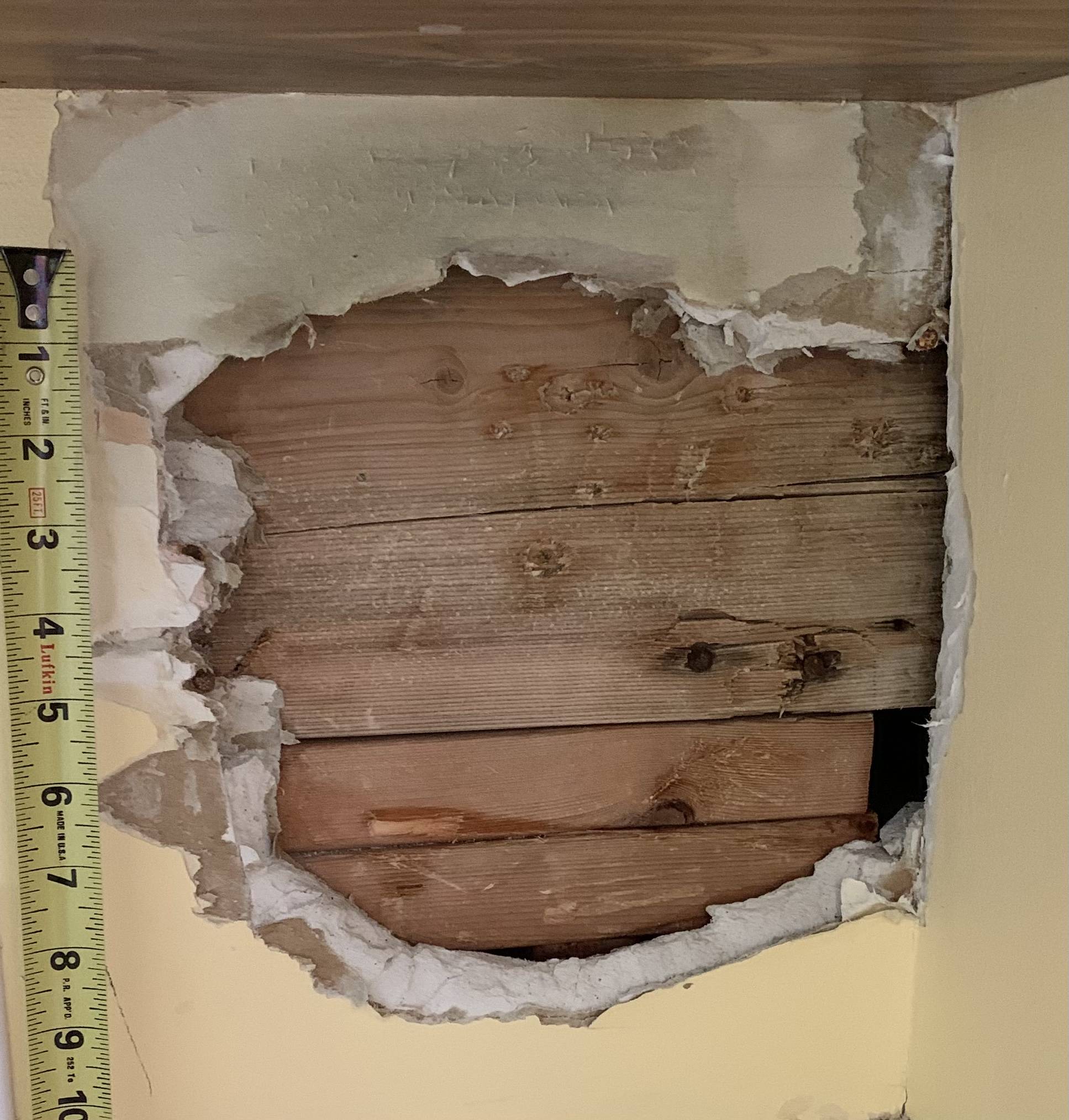I was removing some old vinyl wallpaper from a kitchen and I ran into a couple of patches of mold behind it. The one area was due to a leak in the upstairs bathroom and the other was under a window. Both issues have been taken care of.
However, even though I cleaned the mold from the drywall with an appropriate cleaner, I felt better removing the drywall and need to replace. My problem is trying to make a clean cut line on the drywall that is in front of wood as seen in the photo.
I can’t use a drywall saw because of the wood. I’ve been looking at rotary cutters, etc., but I don’t know what would be the best to cut the drywall out square to proceed with a patch without cutting the wood studs behind.




